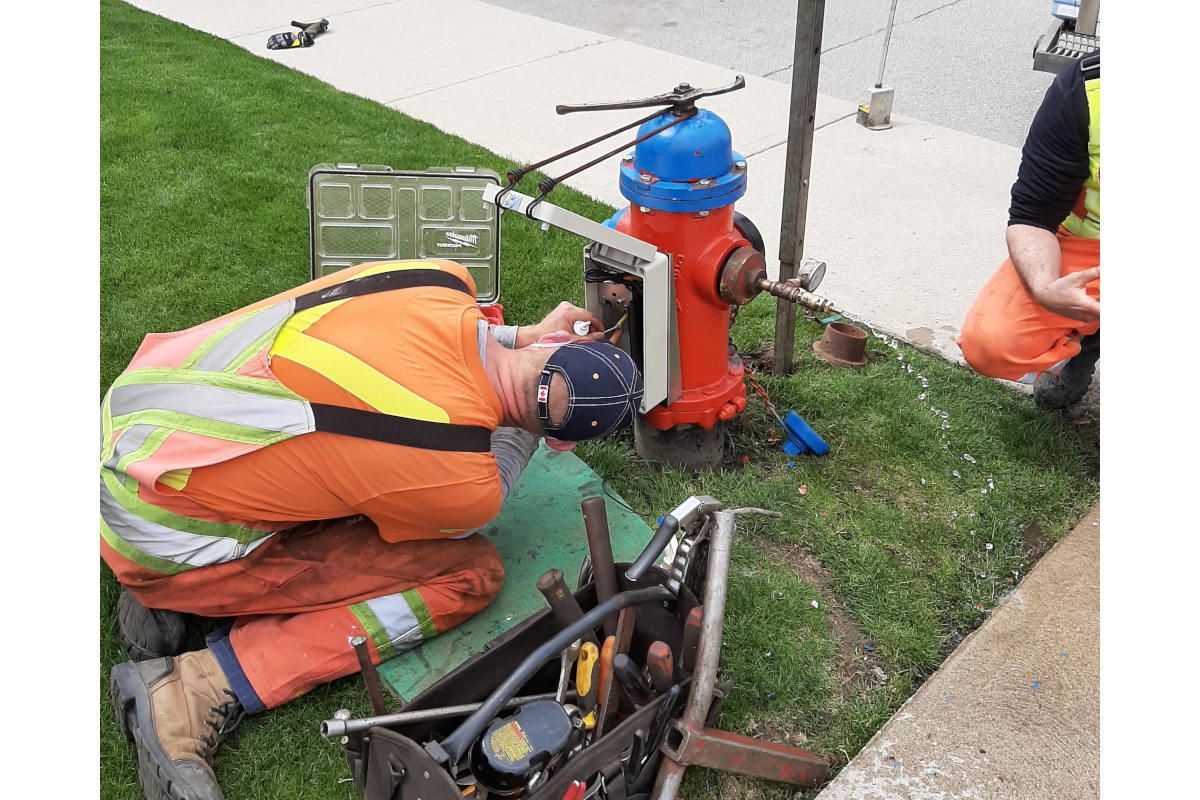
CIPP Provides a Relatively Painless Solution to Upgrade Existing Watermains Crossing Expanding Rail and LRT Lines
Expansion of two components of rail transportation in Calgary resulted in the required upgrade of two feedermains in the city’s water supply system.
Canadian Pacific Railway’s (CP) planned expansion of tracks coincided with the Calgary’s LRT Green Line development. The new tracks were located within an existing CP right-of-way (ROW). The existing feedermains, a 24-in. at 8th Street and a 20-in. at 17th Avenue, were initially installed as steel pipes through casing pipes that extended the distance under the original railway tracks.
Construction of the new tracks necessitated the City provide the same level of protection as the original conditions, i.e., the steel feedermains required a casing pipe.
Construction within railway ROWs adds unique conditions. In this case, a high frequency of trains could cause significant impacts on open cut construction scheduling. The construction might also result in unacceptable interference with rail traffic. The conditions in the areas where the feedermains crossed the ROW were further complicated by difficult soil conditions. Both sites are near the Elbow River, with granular and rocky soils.
Selecting CIPP
Cured-in-place pipe (CIPP) was selected over open cut construction, microtunnelling and horizontal directional drilling. CIPP and the other trenchless options could be carried out without entering the CP ROW, and it eliminated the potential impacts of difficult soils on the other trenchless applications.
The City contracted with Insituform Technologies Ltd. to provide the CIPP, and secured Volker Stevin for the excavation and civil work required to complete to project. The project team worked closely with the city to plan and execute this project.
Planning for the project involved coordination with several other significant projects in the area:
The railway bridge over the Elbow River near 8th Street required access during CIPP work.
Natural gas pipe relocation on 8th Street had to be completed before CIPP lining.
Access for a microtunnelling project meant that the CIPP project could not be built until after microtunnel completion.
Microtunnelling of an electrical line at the 17th Avenue site delayed CIPP work there until May 2021.
In addition to working around other projects, seasonal requirements related to the feedermain operation limited work to non-peak demand periods.

Pipe Conditions
In CIPP pressure pipe projects it is preferred to visually observe the existing host pipe conditions, internally as well as externally. For this project there were no access locations to inspect the inside of the pipe, but external observation of similar pipes in the area confirmed the external coal tar enamel coating.
The City’s records indicated that the existing steel pipes were true 24 in. and 20-in. internal diameter and coal tar enamel lined. The City of Calgary has developed and implemented corrosion protection practices to maintain longevity in buried assets.
Design of the liners for the feedermains was undertaken considering the reported pipe parameters. Liners are sized to ensure full contact with the internal surface of the host pipe. For these applications, external load evaluation included both HS-25 and Copper E80 designations. The proximity to the Elbow and Bow rivers dictated that designers consider groundwater level at surface. The specified operating pressure was 758 kPa (110 psi).
For these operating and external conditions, the resulting liner designs each incorporated two layers of fiberglass reinforcement, with nominal thicknesses of 18 mm and 15 mm for the 24-in. and 20-in. applications respectively. Since the liners are for a potable water application, ANSI/NSF 61 epoxy resin completed the product.

The 8th Street lining project was undertaken in October 2021. The site preparation required excavation, shoring and removing a section of the existing steel feedermain, and erection of a tower structure to provide the required 7.5 m inversion pressure to invert the liner. Liner cure was planned for six hours at 60 degrees.
The first look at the inside of the feedermain confirmed that the pipe was internally and externally coated, and the steel pipe was in excellent condition as expected. Pre-cleaning inspection however, revealed an unexpected feature – an undocumented vertical flanged riser was discovered. It was situated within the CP ROW, so it was not possible to excavate and rectify.
Prior to cure, the liners are pliable, and will conform to the shape, or any deformity in the host pipe. For this situation, the vertical riser would allow the liner to dimple into the void and cause an unacceptable stress concentration. The void was filled and sealed suing high density foam and grout, via man entry.
Cleaning of the line was mostly accomplished with medium pressure flushing. At one location, there appeared to be a hard protrusion at a pipe joint; this was removed using a hydraulically powered chain flail. Cleaning and inspection also confirmed that each joint was internally coated after welding by hand application methods.
The cure was extended to 24 hours to compensate for site conditions that prevented the cure reaching the design temperature. Continuous, full length optical temperature monitoring confirmed that the entire liner was adequately cured. The CIPP work was completed with the installation of internal WEKO-Seals at both ends of the liner.
For the 17th Avenue installation, similar preparation was carried out, but no unexpected features were encountered. However, a combination of the wetout liner temperature, and the cold water available from the distribution system, required preheating water in a tanker truck for inversion. Once accomplished the liner was installed and cured like the 24 in. pipe. WEKO-Seal insertion completed the installation.
Reconnection to the existing system and site restoration completed the project.
Quality control testing results significantly exceeded design values and both liners are capable of operating pressures greater than 1,035 kPa.
George Bontus, P.Eng., is director of engineering at Insituform Technologies Ltd.




